The much-delayed STS-133 finally launched on Thursday afternoon — with 2 seconds to spare in the launch window, no less! I didn’t intend to go MIA once the mission started, but that’s what happened. Being on console doesn’t technically have me working more hours per day, but it always feels that way since they are usually strange hours. My shift is not completely awful, but it’s early.
It’s hard to believe that in a short 15 months, I have worked as the Lead Rendezvous Officer on two space shuttle flights. (The high-school version of me would be in awe.) Saturday’s rendezvous went very well for the shuttle crew as well as for me and my team on the ground. I wrote a more thorough description of all that happens on rendezvous day when I worked STS-129 that you can read if you are interested, but this time around, I’m just going to show a lot of cool photos, all taken by the onboard crew of course.
This is a pretty standard shot of the ISS from a few miles away. Since we approach the station the same way every time, they always get this lovely view out the windows. And yet it never gets old — there’s something so cool, every single time, about seeing the ISS floating there in the blackness of space.
This is a really cool shot I’ve never seen before. The crew has something called a COAS — Crew Optical Alignment Sight — that they can look through to assess how well they are lined up with the ISS. Someone took a camera and shot through the COAS, which produced the neat photo of the ISS as a little point of light just above and left of the center of the crosshairs.
This was taken during the first half of the rendezvous. You can tell because Commander Steve Lindsey is still in his left seat while Pilot Eric Boe is in his right seat. These are their usual spots, but about halfway through rendezvous, Eric goes to the left seat and Steve goes to the piloting station in the back of the cockpit to get ready for the manually flown final approach.
I have no idea where this is, but what a spectacular view…
Al Drew was the hand-held laser (HHL) operator. The HHL is that white box in his hand and it’s basically a laser rangefinder. He’s pointing at the computer in the background, which documents the fact that he got an HHL mark at 13914 feet away from the station. Quite impressive — it takes a very steady hand to get a return at that range. (I think the record is 14000-ish.)
This is the view from about 600 feet directly below the space station, as the crew was getting ready to perform their “backflip” so the station crew could take pictures of the shuttle heat shield. Nice, right?
As the shuttle flips under the station, you get views of the station from all the different windows. This one is taken through one of the front cockpit windows on the commander’s side.
Here’s another shot out a front window (see the white nose of the shuttle at right?). This one is particularly cool because you can see the sun. The angle between the sun and the station’s orbit right now meant that the station would cast a shadow on the shuttle at orbital noon, so the crew had to wait a few extra minutes to start their backflip so that the shadow would pass and the ISS crew could get good, clear photos of the shuttle.
Towards the end of the pitch maneuver, the station rises over the tail of the orbiter. It’s a comforting thing to see, since you lose sight of the ISS when the shuttle faces its belly towards the station — so this is reassurance that yes, it’s still in the same place.
The European ATV is docked to the back end of the station right now — it’s the thing with the X-shaped solar arrays.
The Japanese HTV is also docked to the station right now, just above where the shuttle is. The HTV is the orange cylinder; the shuttle docks to the port sticking out on below the HTV.
This is a great shot of RPOP — Rendezvous and Proximity Operations Program — that the shuttle crew uses towards the end of the rendezvous. The program runs on a laptop and processes the shuttle state vector, radar, TCS (Trajectory Control Sensor), and HHL data. All of these provide the crew with situational awareness of where they are and how fast they’re approaching the station.
It’s preferable to dock at night, since you have more control over the lighting that way.
This is a nice shot of the docking port. The hatch is the circle in the middle, and the diamond-shaped plate is a docking target. Using the lines and the standoff cross there, the crew can make sure they are exactly aligned to ensure a good docking.
I just liked this photo of Nicole Stott in the ISS cupola. This was taken on the day of docking. You can see the shuttle’s tail out the window.
Another successful rendezvous in the books!
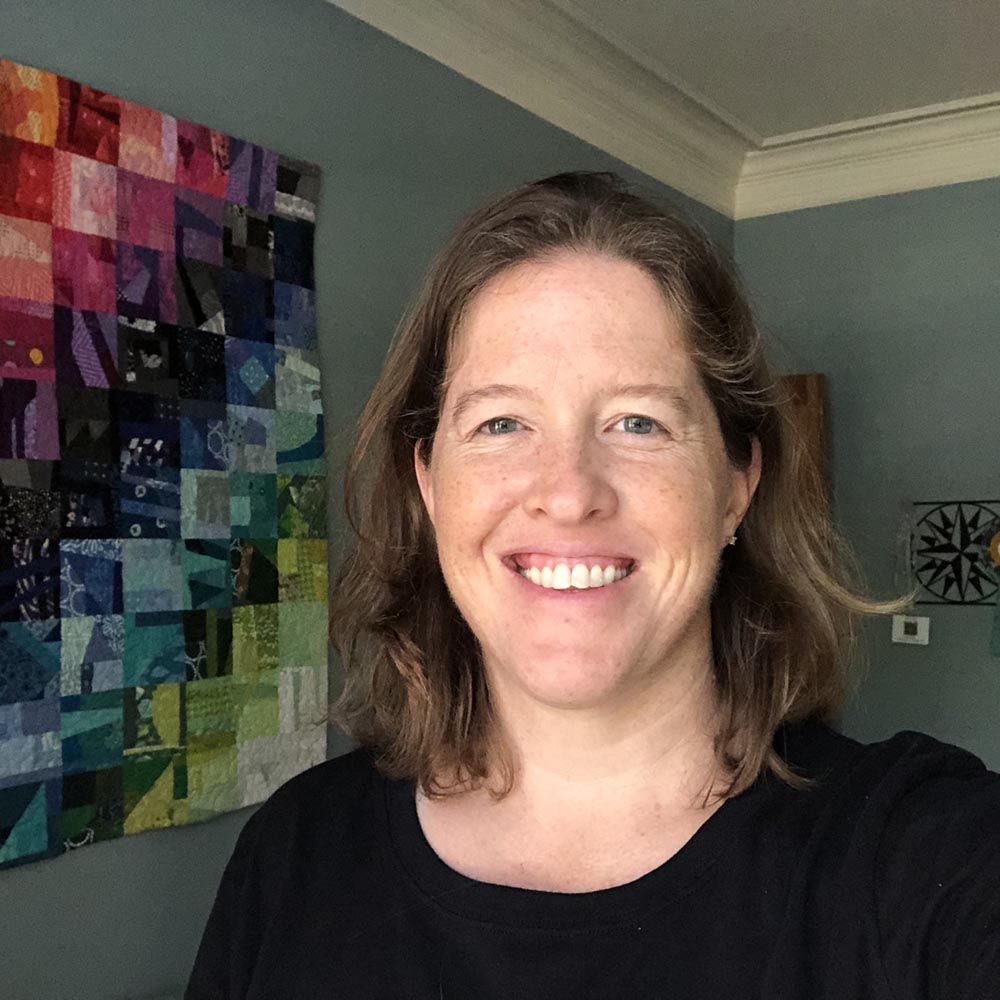
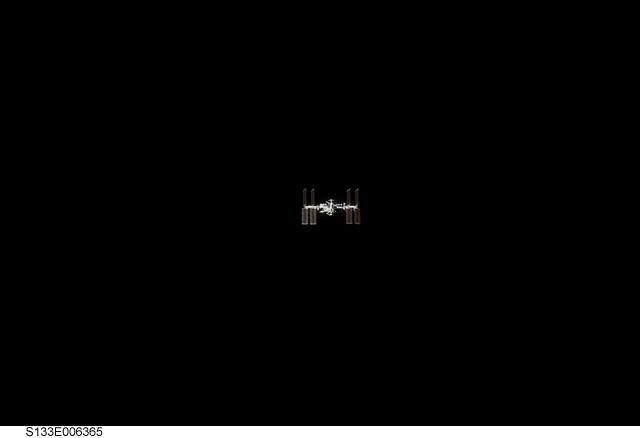
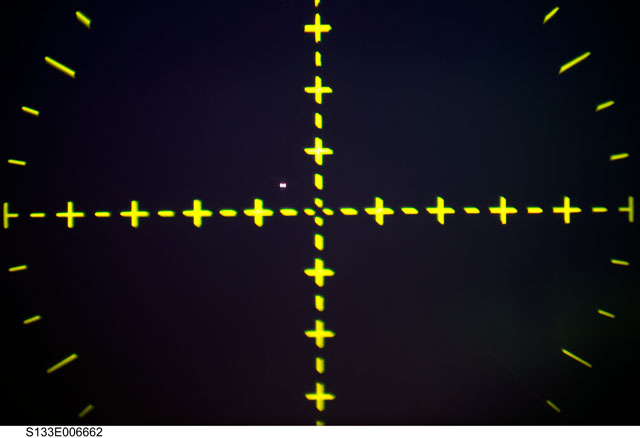
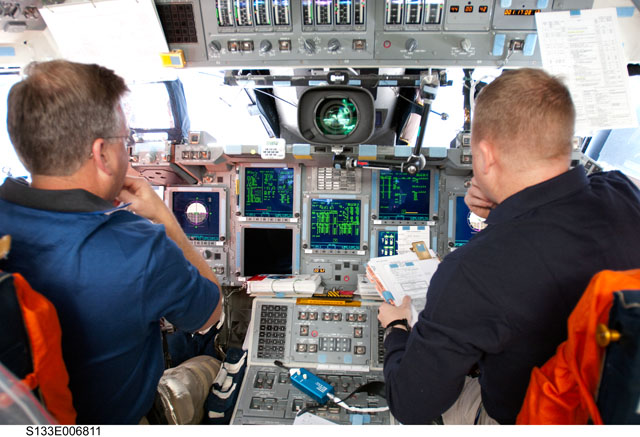
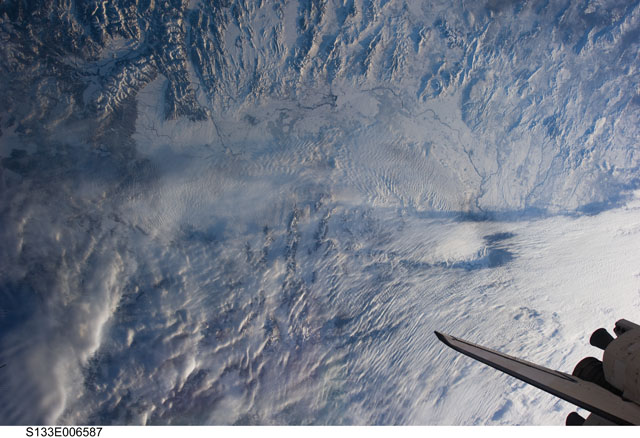
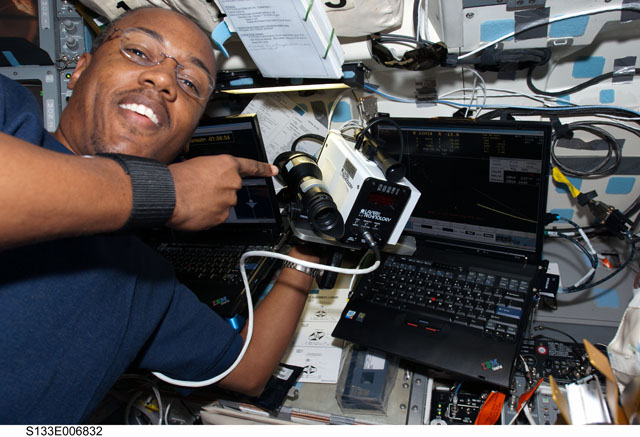
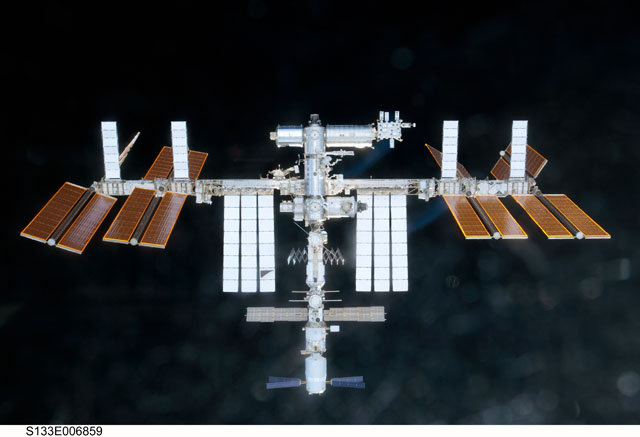
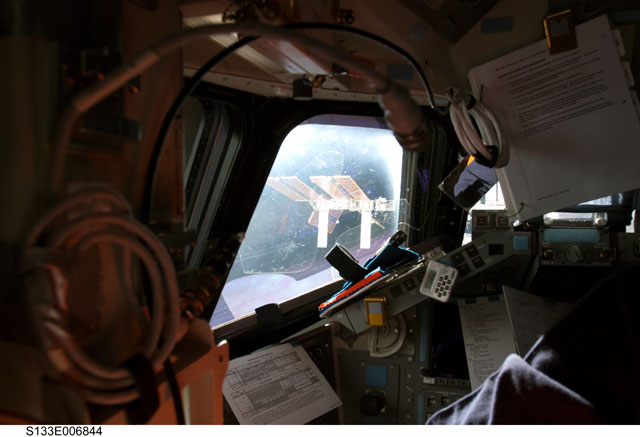
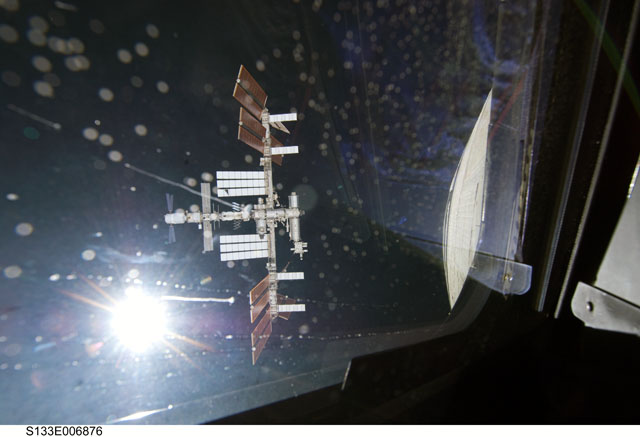
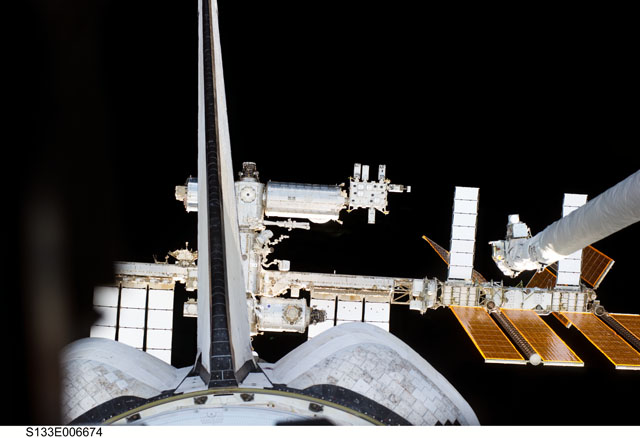
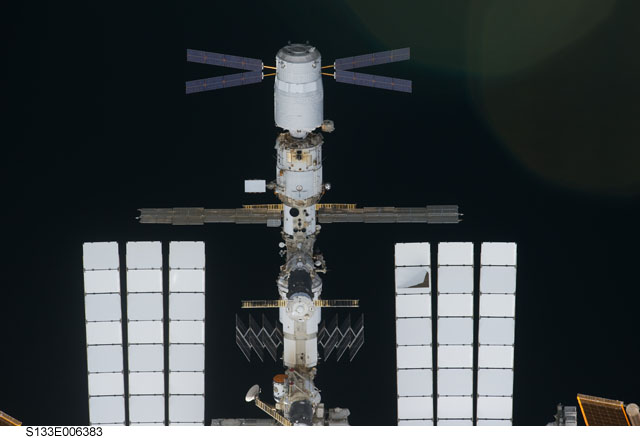
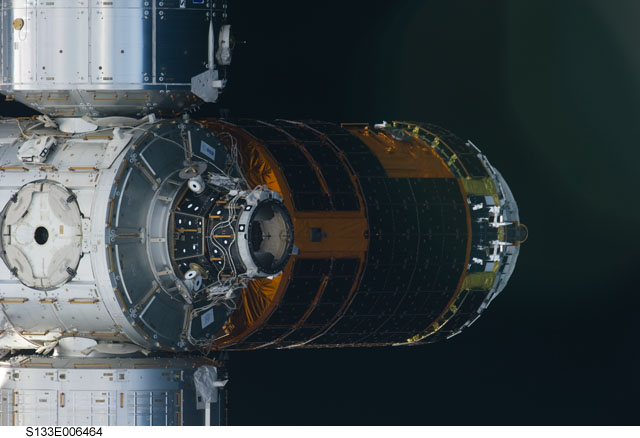
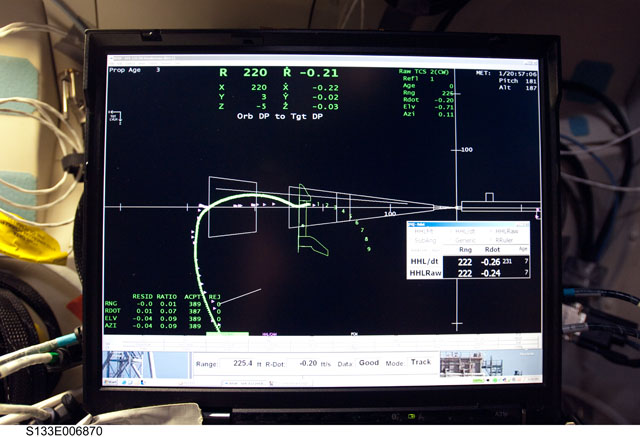
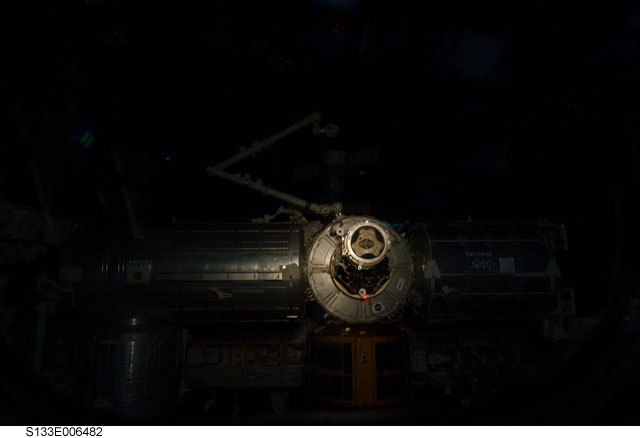

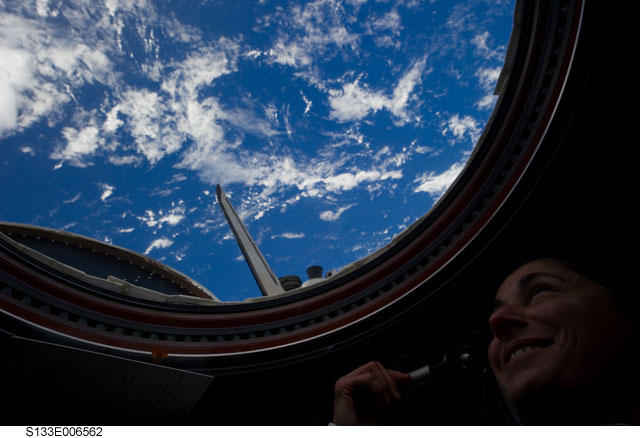

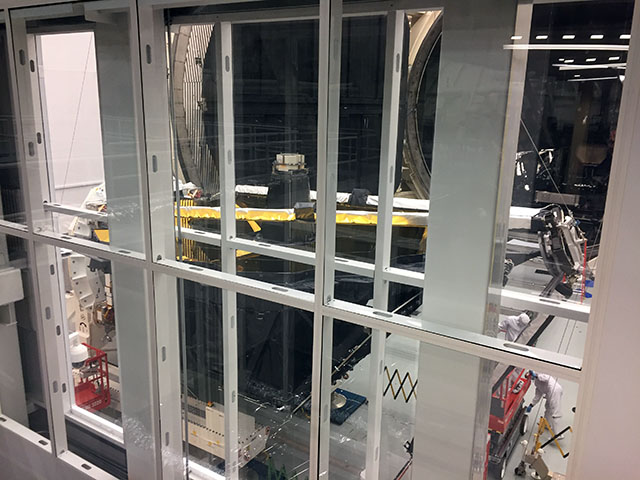

Nice selection of photos. Tell whoever was doing the camera work they did a good job capturing rendezvous!
Great post! I’m used to seeing it from the station angle so this was cool.
As a station person, I used to know nothing about the Orbiter rndz. But since being on Orion I’ve done both a COAS project and work on STORRM. So now I look at your picture spread and see all the things I could poin5 out about Orion. Way cool, thanks.
Glad you guys enjoyed it! I’ve been a shuttle person for so long that in my new job, I’ve been learning a TON about the ISS too.
Ditto on the cool post.
You have an awesome job!